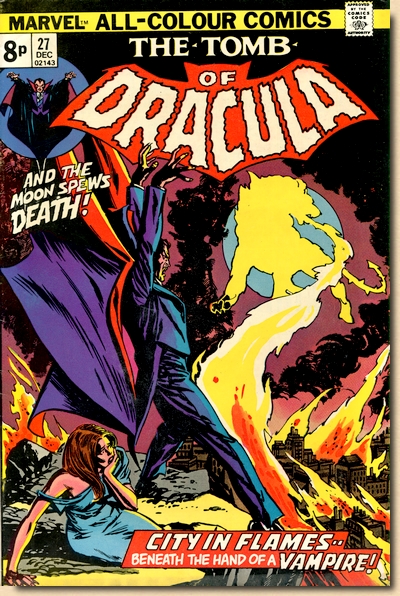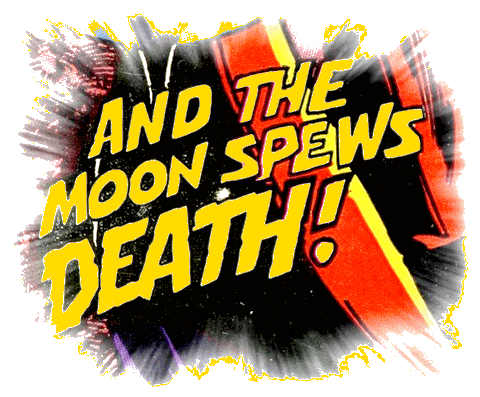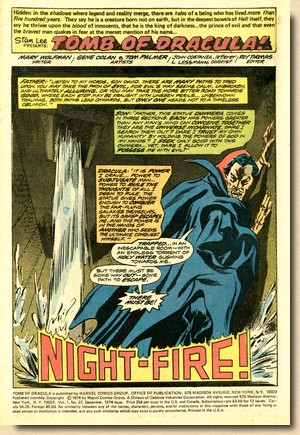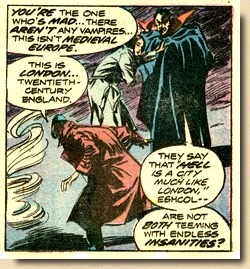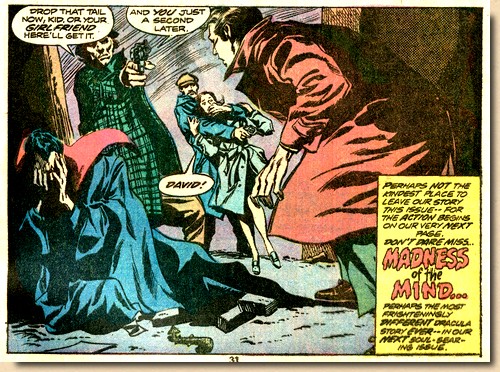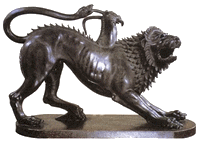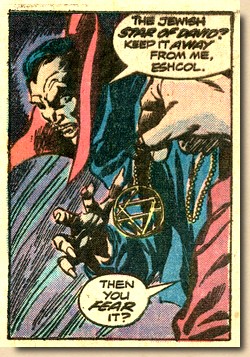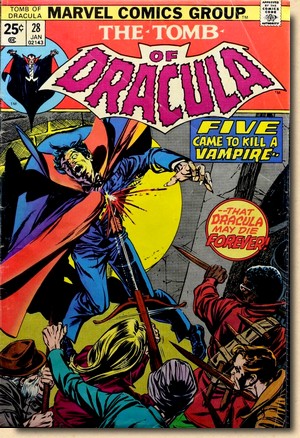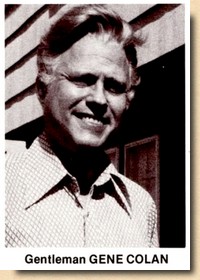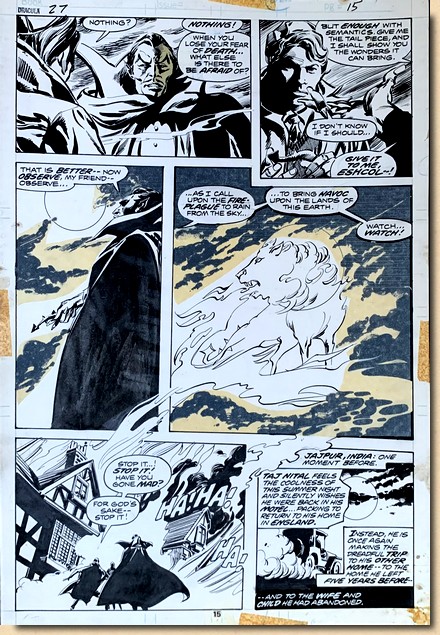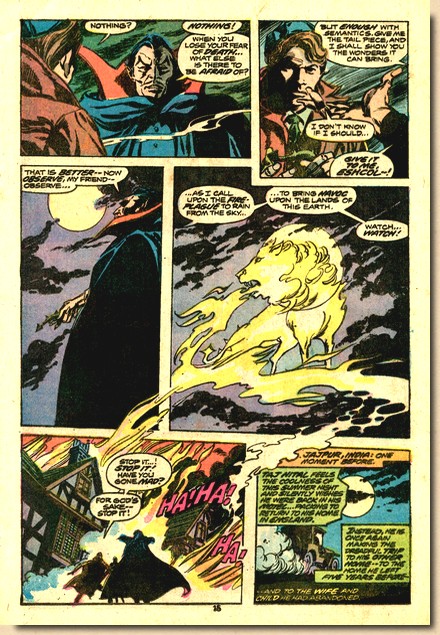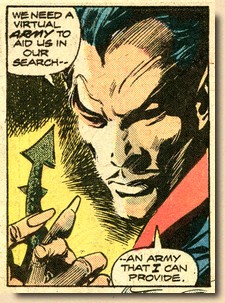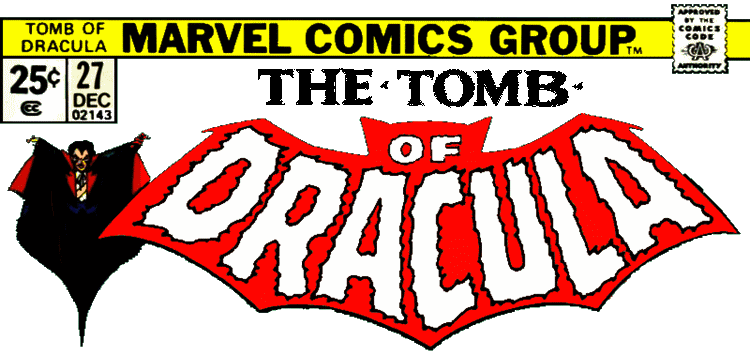| |
Tomb of Dracula #27 is
an exceptionally entertaining and surprisingly
multifaceted comic book, and as such it is also an
important part of the overall fabric which made the
series what it is from today's perception: a comic book
title which shaped and influenced comic book history. Tomb
of Dracula was the longest running Bronze Age horror
comic book title, in many ways serving as the prototype
mould for Marvel's 1970s run of horror comics which
infused the genre with the underlying principles of the
traditional superhero comic book, making the "superhero from the crypt" one of Marvel's milestone
contributions not just to the Bronze Age period of the
1970s but to comic book history as a whole. And finally, Tomb of Dracula
owes its uniqueness and success to an important
shift in focus which Marv Wolfman brought to the title:
"A lot of
us back then were trying to break out of comics just
for kids, and it was very possible for us to do those
things on the non-superhero books, because no one was
paying attention. So Roy Thomas could do that on
Conan, Steve [Englehart] could do that on Doc Strange
and Master of Kung-Fu, [Steve] Gerber could do it on
Man-Thing or Howard the Duck, and I could do it on
Dracula [...] to try and push comics into other
things, other areas, that they had not
explored." (Marv Wolfman in Siuntres, 2006)
|
| |
TRIVIA
|
| |
| Tomb Of Dracula had
featured a letters page entitled "Tomes to the
Tomb" since issue #3, and by the time issue #27 was
prepared for the printers, editorial was receiving a lot
of letters - so much so that Tomb Of Dracula #27
featured not one but two pages of missives from readers. |
| |
 |
|
One thing that always
characterized the letters printed in Tomb Of
Dracula (or TOD, as acronym loving Marvel
often called it) was their quality - witness the
example in this issue pondering Marvel's
necessary choice to follow either the Dracula
from the novel or the movies. |
|
| |
Of course simple and outright praise from readers was
there too, and rightly so.
"Once, I scorned "monster"
comics. "Juvenile!" I declared. "One
dimensional!" I sighed. "Generally
poor" I sneered. After great thought, and a long
period of observation, TOMB OF DRACULA has changed my
mind."
Like any other Marvel comic book from the 1974 period,
Tomb Of Dracula #27 also featured a Bullpen
Bulletin ("Notes and news on a nestful of
Nebbishes!"), plus a Bullpen Bulletin bonus page,
and the usual in-house advertising (not to mention the
infamous flea market ads).
|
| |
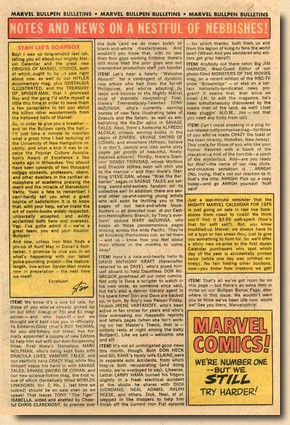
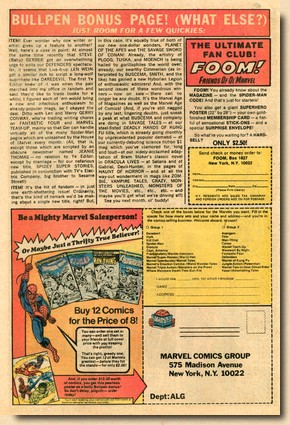
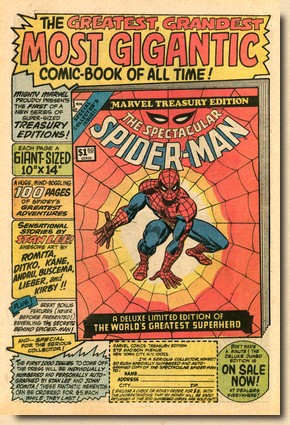
|
| |
Also
somewhat typical for the era was Stan Lee
indulging in the communication of the fact - by
way of his Soapbox column - that he was
by then receiving regular invitations from
universities and colleges to give talks.
"You should
have seen upwards of two thousand college
students, professors, deans, and other
dwellers in the rarefied atmosphere of
academia praising the merit and the miracle
of Marveldom! Verily, 'twas a fete to
remember! I can hardly tell you what a great
source of satisfaction it is to know that,
with your help, we've made the art of comic
books widely respected, universally accepted,
and avidly acclaimed both here and overseas.
Yep, I gotta admit it - we're a great team,
you and your blushin' Bullpen!"
|
|
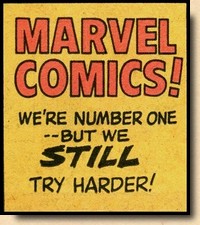 |
|
| |
| Marv Wolfman and Gene Colan, along with Tom Palmer,
certainly had a lot to do with those accolades, raising
the bar of quality in comic books significantly through
their work on Tomb Of Dracula. |
| |
|
| |
| FURTHER
READING ON THE THOUGHT
BALLOON |
| |
 |
|
There's
an issue-by-issue look at
the Tomb Of Dracula
series here. |
|
|
|
|
|
| |
 |
|
You
can read up on the
previous issue, Tomb Of
Dracula #26, here. |
|
|
|
|
| |
 |
|
There's
more on the roots of
Marvel's Tomb Of
Dracula series here. |
|
|
|
|
| |
 |
|
You
can read more about
Marvel's 1970s Bronze Age
horror genre titles and
their "superheroes
from the crypt" here. |
|
|
|
|
| |
 |
|
There's
more on
"Gentleman"
Gene "the Dean"
Colan, acclaimed
penciller of the Tomb
Of Dracula series, here. |
|
|
|
|
| |
|
| |
| BIBLIOGRAPHY COMIC GEEK SPEAK (2005)
Podcast: Book of the month club - episode 5 - Tomb of
Dracula, Interview with Marv Wolfman (31 October
2005, quoted from personal transcript)
COOKE Jon
B. (2001) "Son of Stan: Roy's Years of
Horror", Comic
Book Artist #13
DLUGOS Jenn
(2002) "Gene Colan Interview", ClassicHorror.com,
published online 15 December 2022
LATTIMORE Richmond
(1951) The Illiad, Chicago University Press
MATA Shiai
(2007) "Gene Colan Interview", SlayerLit
(stored on Internet Archive)
SIUNTRES John
(2006) "Marv Wolfman by Night", Word
Balloon: The Comic Creator's Interview Show (quoted
from personal transcript)
THOMAS Roy
(2000) "So you want a Job eh? The Gene
Colan Interview",
Alter Ego (vol. 3 issue 6)
|
| |
|
| |



